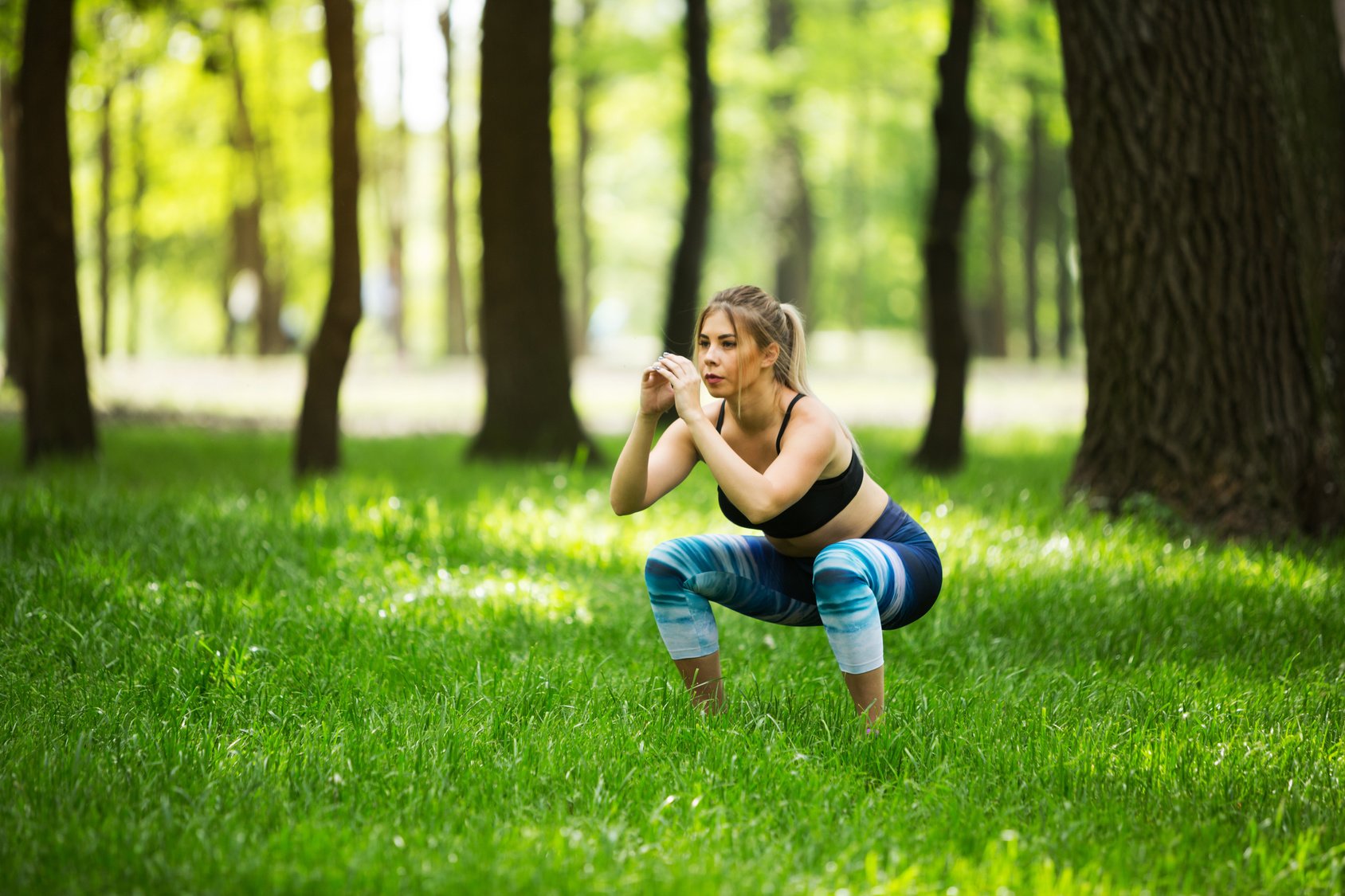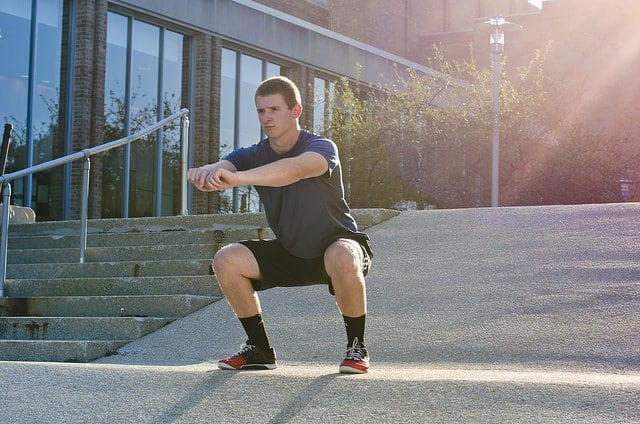Looking for the best quad exercises for runners? Then you’re in the right place.
One thing you can to improve your running performance and reduce injury risk is to strength train.
One muscle group that requires special attention is the quadriceps.
The primary function of these muscles in running is in supporting your body while landing on that specific leg as well as propelling forward.
In today’s post, I’ll share the top 7 effective quad exercises for runners that will give your running the next edge.
Sound exciting?
Let’s get started.
What Are The Quadriceps Muscles?
Located on the frontal thigh on both sides of the body just above the knees, the quads are one of the largest and strongest groups of muscles in the body.
The quadriceps are a group of four (hence “quad”)— smaller muscles that make up the muscle on the front of the thigh.
These include :
- Vastus Medialis: Or teardrop muscles, which is found within the inner of the leg by the knee
- Vastus Lateralis: found on the outside part of the upper leg.
- Rectus Femoris: the muscle in charge of hip flexion, located in the middle of the thigh.
- Vastus Intermedius: sandwiched between the vastum lateralis and vastus medialis on the front of the upper leg
The main function of the quad muscles is to bend and straighten—or extend—the knee.
That’s why quadricep strength, and mobility is crucial for all forms of physical activity, such as walking, running, cycling, jumping, squatting, etc.
Benefits of Quad Strengthening Exercises For Runners
Here are a few benefits you are going to reap by working on increasing strength and power in the quadriceps:
Improve speed. Strong quads improve your overall speed, boost your ability to power up steep hills with ease and increase your push-off power—both on the running field and off.
Bulletproof your body against injury.
Research has linked weak and tight quads to a host of running injuries.
For example, study has found that weak quads often cause runner’s knee—technically, these aren’t capable of supporting and stabilizing the knee during the running motion.
You need strong quads to stabilize the patella—the kneecap—and keep it tracking in a straight line following impact.
By strengthening this muscle, you’ll reduce your risks of injuries and increase the power in your legs.
Not only that, according to researchers at the University of Delaware, strong quadriceps act as shock absorbers, which protects your knees against common overuse injury.
Improve endurance. Are you suffering from the dreadful “dead-leg” condition? Then the problem might be weak quads since they play such a big role in keeping your legs going strong.
To Conclude
Regardless of your fitness goals, whether it’s to a run a faster 5K, adding the below quad exercises for runners is a must. In other words, if you don’t have active, strong quads, you can’t do jack.
Quadriceps Training For Runners Guidelines
Start Slowly
As with any other form of exercises, start quad training slowly and gently.
As get stronger, challenge yourself by adding more weight, doing more sets of each exercise, or both.
Warm Up Right
Begin every quad workout session with a thorough dynamic warm-up consisting of 5 minutes of slow jogging—or running in place—followed by another 5 minutes of doing dynamic moves such as inch worse, squats, walking lunges, and high knees.
Find The Right Combo
You can add some of the quad exercises described below into a lower body strength routine that you perform about one to two times per week.
For maximum results, perform roughly 8 to 12 repetition of each exercise, aiming for two to three sets in total.
Proper Form
Proper form is king so keep it all the time — quality over quantity.
Never aim to perform a higher number of reps without paying attention to your form.
Keep in mind that as you make your training more challenging, you’ll be performing fewer reps but still gaining strength.
Don’t Forget Your Hamstrings
You also you need to strengthen your hamstrings in conjunction with the quads.
Otherwise, you’ll only exacerbate muscles imbalances if you exclusively work on one group muscle while neglecting the other.
As a runner, your quads might be already stronger due to the running motion.
That’s why runners are more prone to have weaker hamstrings than quads.
I highly recommend stiff-legged deadlifts and leg circles for training your hamstrings.
The Best 5 Quad Exercises For Runners
You can perform this quad routine as a workout in itself, or you can choose to add a few of these exercises into your already established routine—it’s your choice.
These exercises are the best because they hit the quads from so many different angles, targeting the front, sides and upper of these crucial running muscles.
Quad Exercise For Runners –1. Squats
Depending on your current fitness level and training goals, you can perform the squat using nothing but your body weight or you can also use dumbbells or a barbell for more challenge.
Squats and its other variations put a lot of emphasis on the quads as well as improving lower body strength, endurance, and mobility.
Squats are some of the best runners oriented exercises that there is.
Proper Form
Stand feet width apart, back flat, and core engaged.
Next, while keeping your head up and knees tracking over your toes, slowly squat down by bending the knees and sitting your butt back as if you were sitting in an imaginary chair.
Keep squatting down until your knees are bent at a 90 degrees angle and/or when your thighs are parallel to the ground.
Once you reach the bottom half of the squat, pause for a moment, then press up through the heels and engage your quads on the way up.
That’s one rep.
2. Single Leg Squats
This is a more advanced version of a squat, and it requires an enormous amount of strength, mobility, and flexibility so you’d better be careful with this one.
Pistols are super challenging exercise, so please feel free to opt for the assisted pistol variation by grabbing a TRX strap or holding on to a chair, a pole, or a wall, for balance.
Additional resource – The Myrtl routine
Proper Form
Begin by standing with your feet hip-width apart, then shift your weight to your right leg.
Then, balance on your right leg and fully extend the left leg out in front of you.
Make sure to squat down as deep as you can on the planted leg.
Next, while keeping your back flat and core engaged, bend your right hip and knee at the same time to perform the exercise.
Aim for at least a 50 degrees bend in the right knee, while keeping your hips even and knee tracking over the toes.
Last up, return to standing position by extending your right leg to complete one rep.
Aim for 10 to 12 reps on each leg to complete one set.
Perform five sets.
3. Leg Extensions Quad Exercise
Perform the easier version without the need for a machine by sitting down on a higher table or chair and clasping a weight between your feet for more resistance.
It’s your choice.
Proper Form
Begin by sitting on the padded seat of the machine (just like shown in the video tutorial) with the pads over the top of the ankles.
Next, hook your feet under the padded bar and while bracing your core and keeping your back head straight.
While holding the handles for stability, straighten your legs by extending them up, squeeze at the top and hold for a second, then slowly bring the weight back down, but do not allow your knees go past a 90-degree angle.
4. Weighted Walking Lunge
In addition to the squat, walking lunges are some of the best runners oriented quad strength exercises.
Plus they’re dynamic and target most of the lower body muscles, especially your rectus femoris muscle.
Proper Form
Begin by standing up straight with dumbbells grasped to each side or with a loaded barbell rested on the upper back.
Next, while keeping the torso upright and core activated, take a large step forward with your right leg, landing on the heel than the forefoot.
Then, drop into a lunge and lower your body down until both knees are bent at a 90-degree angle with the left knee almost touching the floor.
Move forward by driving through the heel of your right foot while bringing your left leg forward until you are back to starting position, then step with your left leg into a lunge, repeating the pattern to complete one rep.
Do 8 to 10 reps to complete one set.
Perform five sets.
5. Leg Press
This is another classical quad exercise, and you’ll also need access to the appropriate machine.
This exercise mainly targets the quadricep provided that you’re keeping good form the entire time.
Proper Form
Begin by sitting on the leg press machine with your head and back against the padded support.
To assume the right position, make sure to place your feet on the footplate roughly hip-width distance apart while keeping the heels flat the entire time.
Next, grab the seat handles, carefully unlatch the sled from the safeties, then extend your knees to press the weight up until your legs are nearly straight, stopping just short of locking out.
Pause for a moment, then lower the platform by bending your knees.
Make sure to push through your heels, keeping your knees in line with the toes the entire time, allowing for no bowing inward nor outward.
Just be careful here with the leg press as it is notoriously known for causing trouble.
New to Running? Start Here…
If you’re serious about running, getting fit, and staying injury free, then make sure to download my Runners Blueprint Guide!
Inside this guide, you’ll learn how to start running and lose weight the easy and painless way. This is, in fact, your ultimate manifesto to becoming a faster and a stronger runner. And you want that, don’t you?
Click HERE to check out my Runners Blueprint System today!
Don’t miss out! My awesome running plan is just one click away.
Quad Exercises For Runners – The Conclusion
There you have it!
The above quad exercises are the best when it comes to increasing strength in your lower body, especially in the rectus femoris muscle.
Do this awesome quad workout on a regular basis if you’re serious about making real progress. Also, keep in mind to stay within your fitness level the entire time.
Here are more strength exercises for runners.
Please feel free to leave your comments and questions in the section below.
In the meantime thank you for reading my post
Keep Running Strong
David D.



